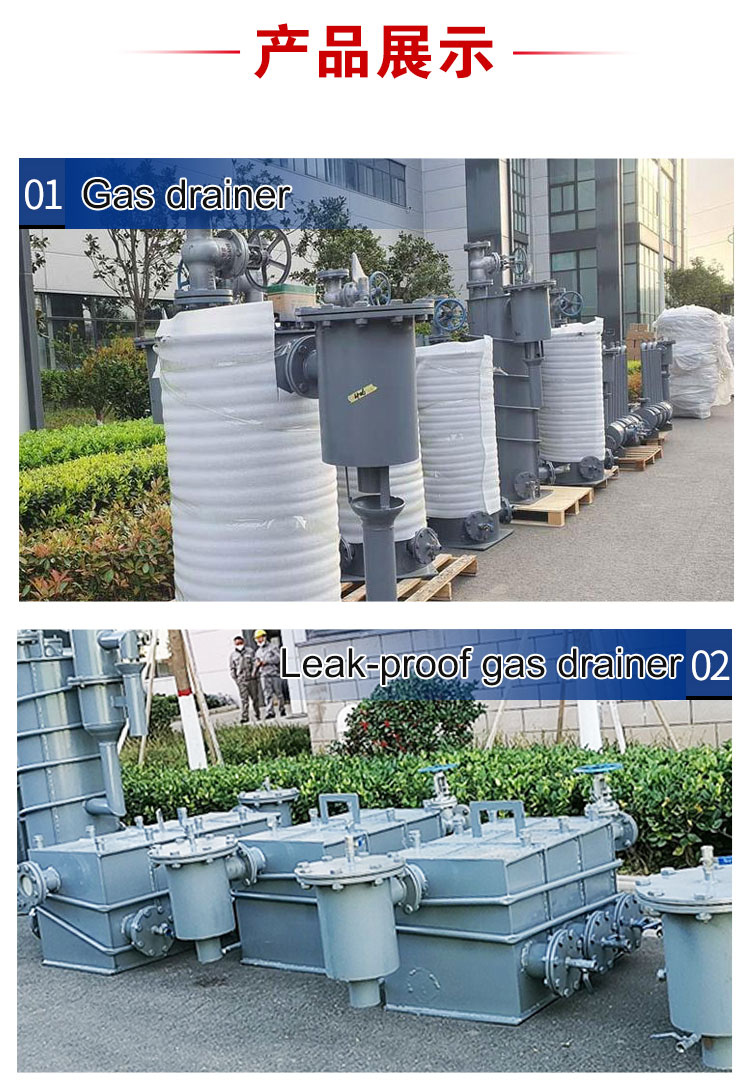Thegaspipelinedrainerisacloseddrainer.Ifthereiswaterinthegaspipeline,itwilldrain,andifthereisnowater
The gas pipeline drainer is a closed drainer. If there is water in the gas pipeline, it will drain, and if there is no water, it will be closed. No need to add supplementary water; It can still cut off the overpressure gas, automatically identify, without any power; the drainage is smooth, can prevent the slag from clogging, the cleaning cycle can be extended by more than two times (usually 1-2 years), and can mechanically clean up the dead corners of the slag; The leakage device can not only block all kinds of overpressure gas, but also prevent water volatilization.
The gas pipe drain should be installed on a flat ground foundation, and it should be installed vertically without tilting to ensure reliable operation of the drain.
The on-site gas pipeline is connected with the gas inlet pipe of the gas drain, and a gasket should be used at the flange connection to ensure tight sealing and no gas leakage. The condensed water drain pipe of the drainer should be led into the nearby sewer, and the condensed water should not be directly discharged under the equipment foundation.
There should be guardrails and warning signs around the drain to prevent accidents such as collision and leakage. Before use, fill the gas drain with water! When adding water, first open the air release valve of the anti-leakage device on the top of the gas drain, and then use the water inlet of the condensate water inlet on the drain to add water to the drain. When the lower condensate drain pipe is dripping water, the drain is filled with water. After adding water, close the drain valve to prevent gas leakage.







gas pipe drain
Similar ProductsVIEW MORE >